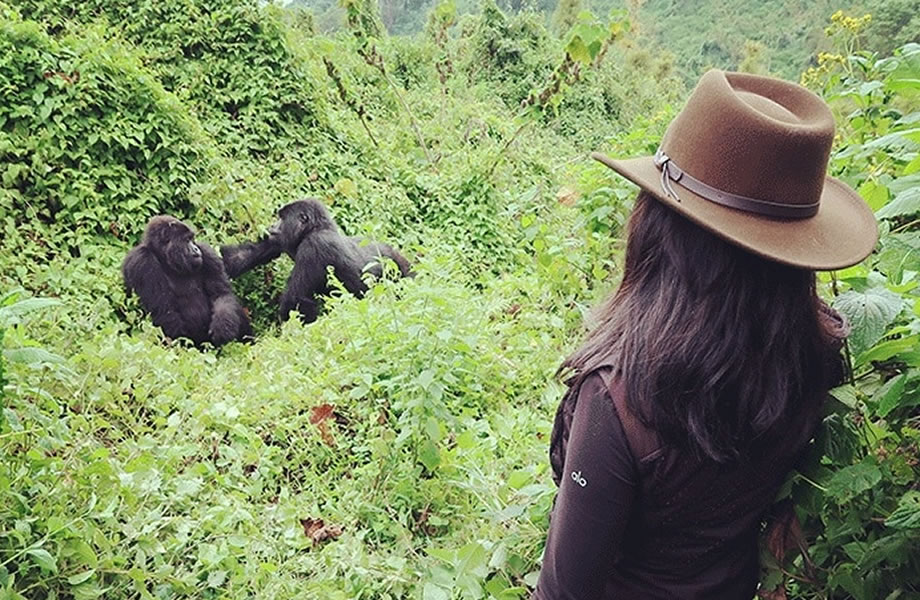Gorilla trekking or tracking whichever way you call it, is the most thought after activity on an African safari experience and because gorilla trekking is a daily routine interaction with the gorillas, there is need to create an eco- friendly environment for the gorilla to co-exist with humans without fear or threat. Mountain gorillas are critical in nature if you neglect caring and managing their sustainability, they can be prone to extinction due to poaching, communicable diseases such as flu and cough, pneumonia, COVID-19 among others.
Mountain gorillas in the recent past years have increased in number due to good conservation techniques by the responsible bodies such as Uganda Wildlife Authority managing Mgahinga gorilla national park and Bwindi forest national park where as Rwanda development Board manages volcanoes national park in Rwanda. For mountain gorilla sustainability and eco-friendly tips and guidelines, sale of gorilla permits was introduced which also help to limit the number of people trekking to see mountain gorillas to 8 per gorilla family. More to that the money collected goes back to the community and improving conservation techniques. Gorilla permits in Uganda cost US dollar 700 and US dollar 1500 in Rwanda.
In a bid to create an eco-friendly gorilla safari trek, these are some of the tips you need to follow;
- Respect the minimum of 08 members imposed by management per gorilla family. This limits exposure of airborne diseases to the gorillas and ensure no social disturbance and stressing the gorillas with human interaction. Seeing the gorillas is also restricted to one hour for gorilla tracking unlike gorilla habituation experience which allows 4-hours. Only adults and teens of 16 years are permitted to trek and see the gorillas.
- Do not dump into the park with any garbage be it a paper or polythene. Whatever rubbish you have must be disposed in designated dustbins.
- In case you feel sick before the gorilla trek with a contagious disease such flu, cough asthma, COVID-19 don’t attempt to trek to see the gorillas, another time will be arranged, or refund of money where appropriate. Remember mountain gorillas share 98% DNA with humans with such a risk of exposure will may lose them to extinction. More so if you feel the urge to sneeze or cough while with the gorillas turn the opposite direction from them.
- When you approach the gorillas maintain a social distance from each other and 7 meters away from the gorilla, this helps keep the gorillas calm and relaxed as they go about their day. Remember hand sanitizing or washing hands before going to the gorillas and also wearing your face mask while with the gorillas is a must before and while with the gorillas.
- Make sure you stay in the company of your group and adhere to your guides instructions. Mountain gorillas remain wild much as they are habituated, they can get irritated by human presence and charge, do not panic but follow what your ranger guides instructs you to do.
- Do not smoke or drink while with the gorillas. Eating or smoking will increase the risk the risk of transmittable diseases such as tuberculosis.
- Flash photography is restricted, while taking pictures make sure the camera setting is in silence as well the flash light. To be sure adjust the settings before you set off for gorilla trekking.
- Don’t temp to touch the gorillas, they are wild and in case it gets close to you scotch down and stay still, gorillas are shy but stubborn it may pull you.
- In case of urge to ease your self inform the ranger guide who will help to find away and advise accordingly.
The above Eco-friendly tips have been in place since gorilla tourism began. This has helped to safe guard the lives of the endangered gorillas up to this time. Other than the rules and guidelines the government introduced community projects by giving back to the surrounding communities. The money collected form the sale of gorilla permits 20% of it goes back to the neighboring communities as well as Mass sensitization.
